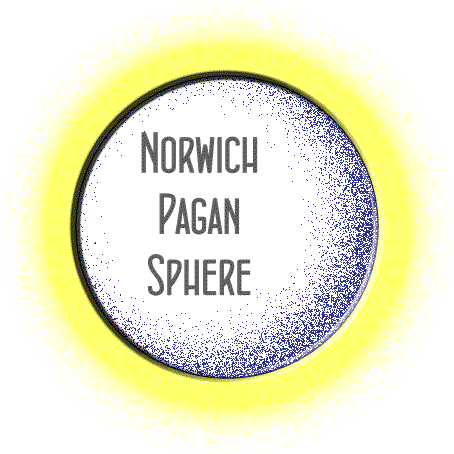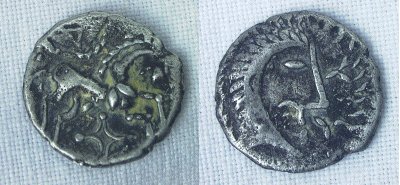
Brought to you by
Norwich Pagan Sphere

 |
Brought to you by
|

This coin was struck nearly 2000 years ago by the Iceni - the name of the people of what is now Norfolk and northern Suffolk at the time.
The style of decoration is known as 'Celtic', although this is a problematic term. 'Celtic' coins can be shown to have descended from the designs on Macedonian coins (staters), from the 4th century BCE reigns of Philip II and Alexander the Great, showing Apollo and a horse-drawn chariot. They are not simply bad copies, however, as the coins inspired by the Macedonian prototypes took key images that resonated in their societies and used them in different ways.
The horse remained important, as a symbol of power, wealth and transcendance. The chariot wheel became a sun wheel (often stylized). Apollo's head became a stylized head or sometimes a boar, a symbol of power across the continent in the Celtic cultural milieu. Such use of the imagery may well be related to the legitimisation of sacred kingship by the display of merging images of man and beast (horse, boar) as well as other trance-related motifs (Creighton, 2000, chapter 2).
Whilst the material culture of the Iceni was clearly Celtic, their racial and linguistic background was probably more complicated, living on the edge of the land with the sea as the major communication route. Indeed, some of the (rare) inscribed Iceni coins have text which appears to be derived from a Germanic rather than Celtic linguistic root (Nash Briggs, 2011). However, recent work suggests that the coins were minted for traders, rather than rulers per se (Talbot, 2017), so it is possible that the names that appear Germanic belonged to foreign traders operating in Iceni territory.